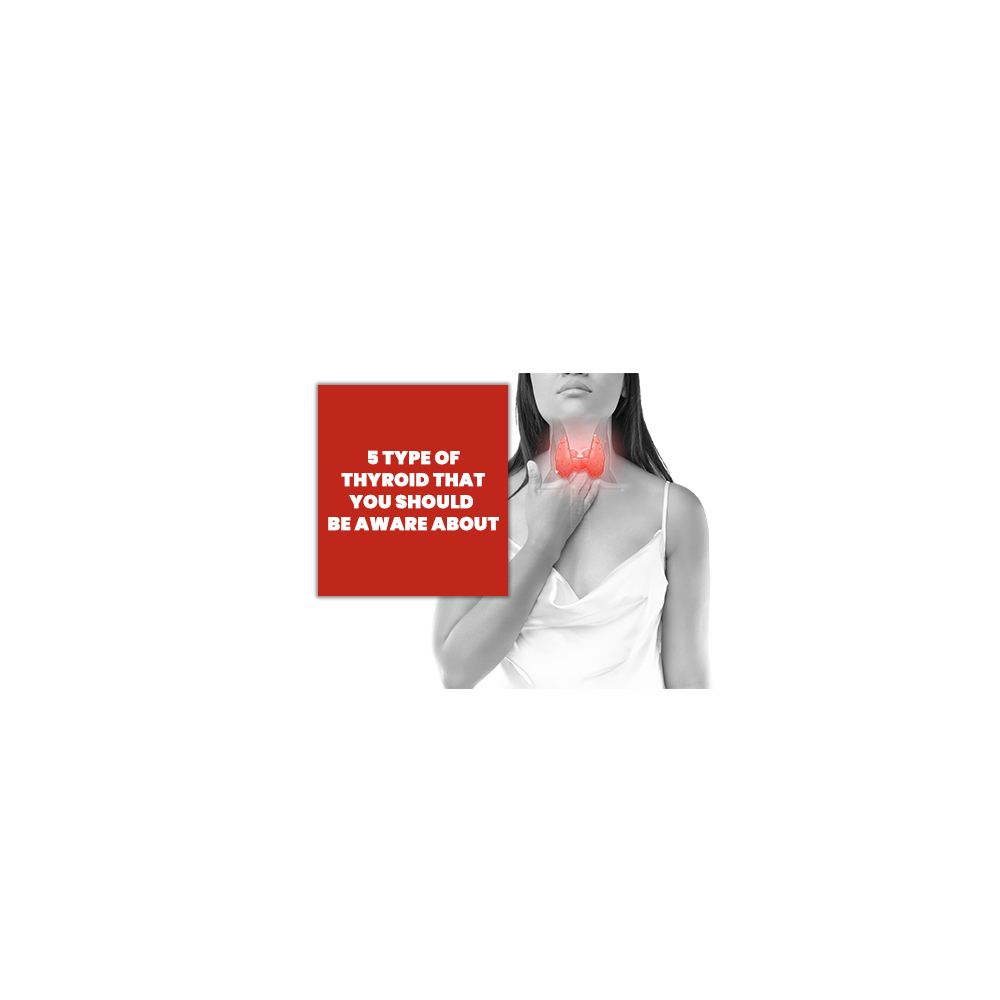INTRODUCTION
We mostly think that if we have thyroid, it must be hyperthyroidism or hypothyroidism. But do you know the butterfly-shaped hormone which is known as thyroid hormone also has different types? These Thyroid hormones regulate the rate of several bodily functions. These include the rate at which you burn calories and the rate at which your heartbeats. Your body’s metabolism is responsible for all of these actions. To know what type of thyroids you are suffering from, consult your doctor and get the check-up done! Let us have a basic idea about these types of thyroids.
DO YOU KNOW HOW MANY TYPES OF THYROIDS ARE THERE?
The thyroid is not limited to hyperthyroidism or hypothyroidism. Continue reading to know how many types of thyroids are there? There are chances that you must be reading the names for the first time!
- Goiter
This is one of the thyroid types. In simple words, goiter means swelling or enlargement of the butterfly-shaped thyroid gland. Don’t worry it is painless but if you have a big goiter then you will have a problem in breathing, swallowing a feeling of stiffness in the throat, and coughing. The main reason why goiter occurs is the lack of iodine in the diet you are having. Goiter is most seen in people when they cross 40 years and especially in females. It can be treated by medications, Radioactive iodine treatment, biopsy, and surgery. Depending on the intensity of the goiter the doctor will recommend you treatment.
- Hyperthyroidism
The thyroid gland which is present in our neck produces hormones tetraiodothyronine (T4) and triiodothyronine (T3), which regulate metabolism. When these glands start producing an excess of T4, T3 or both hormones it causes hyperthyroidism. In other words, when there is excess production of thyroid hormone it is called hyperthyroidism. The symptoms are nervousness, increases in heartbeats, shaking of hands, excess sweating, hair loss, and others. You must focus on your diet. It is very important that you have a healthy diet rich in calcium and sodium, to avoid hyperthyroidism. Hyperthyroidism can also weaken and thin your bones, which can contribute to osteoporosis. Vitamin D and calcium supplements can help strengthen your bones during and after treatment.
- Hypothyroidism
This thyroid is the reverse of hyperthyroidism. In this thyroid, the body doesn’t produce enough thyroid hormones. If the hormones are not produced in enough amounts, our body begins to slow down and metabolism decreases. Do you know the reason why this thyroid happens? “Hashimoto’s thyroiditis” is the cause of hypothyroidism. Thyroiditis is a thyroid gland inflammation or swelling. Extremely low thyroid hormone levels can result in a potentially fatal condition This is more common in females and people who cross 60 years of age. The baby does not receive enough thyroid hormone if the mother is hypothyroid. This can cause issues with the mental development of the baby. The symptoms of hypothyroidism differ in every individual. Some of the most common symptoms are weight gain, dry skin, weakness in muscles, constipation, etc. This thyroid can be detected with a physical examination of your body and blood tests.
- Thyroid cancer
You all must have heard of this type of thyroid? Adult women are significantly more likely than men or children to have thyroid cancer. People under the age of 55 accounts for almost two-thirds of all instances. Thyroid cancer comes in a variety of forms, depending on which cell type within the thyroid has turned malignant. If the cancer is detected at an early stage, there are high chances that you can defeat cancer and live a healthy life ahead.
- Thyroid nodules
Have you heard of lump formation in your thyroid glands? Thyroid overgrowth can result in the formation of one or more nodules. It is still a question of why this problem occurs! When nodules form, the greatest concern is cancer. Nodules can be single or multiple, and their size can vary. The majority of thyroid nodules cause no symptoms. You may be able to see nodules if you have several of them or if they are large and this can cause extreme pain in the neck, problems in swallowing or breathing. It is mostly found in people less than 20 years and more than 70 years. The thyroid nodules can be identified with the help of a thyroid hormone level test, thyroid scan and ultrasound, and biopsy of the thyroid gland.
CONCLUSION
Our body has thyroid glands that are in the shape of a butterfly. When these glands don’t function properly, these types of thyroid problems can happen. Don’t worry these types of thyroid disease can be treated and are not fatal. Yes, there can be some cases when the thyroid will need surgery for its removal but otherwise, medicines and a good diet can treat it. It is recommended to visit your doctor as soon as you see any symptoms.
.

